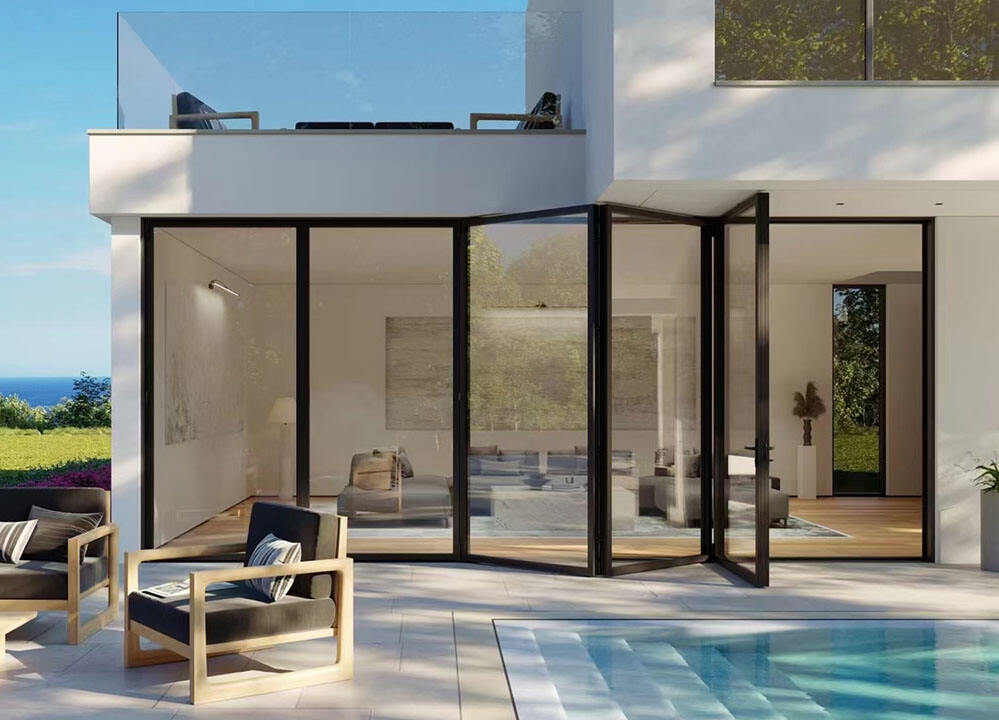20 Tipi ta' Iġieħ
It-tiegħi, kif elementi strutturali komuni, għandhom kellu bżonn li jkunu erġa' elementi architettonici essenzjali għal dawn il-funkzjonijiet multipli. Meta jgħaddmu vist, nhar u ventilazzjoni naturali, jagħmlu skudo kontra l-ħarsa u s-sit tat-tiep esterni u jagħmlu l-aprezzja tal-faċċata. Huma bħala li jgħaddmu biex ninkonnettew u nijussa' fuq is-surroundings tagħna, u it-tiegħi jagħmlu rol ta' pont viswali bin-nofs interna u l-esterna.

L-infinestri għandhom mirja ta' funzjonijiet praktik u dekorattivi, u l-iskelta tal-tip skont il-bidu hija ċentru; għandha tkun tista' tagħti riposta għall-bidiet spazjali speċifiki u għall-ġdidiet tal-utent, u trid tirrispondi għall-kondizzjonijiet esistenti kif ukoll l-orientament, iklim u lokazzjoni. L-infinestri jistgħux jivvulgu f’ żiemel, spessur, tip ta' Żkla, materjali tal-qaddija, moviment, mod fuq it-tas-sigillarju u darba ta' transparanza. L-teknoloġija moħħara anki sviluppat fatturi innovattivi tal-Żkla, minn panelli resistenti għall-ġmir ġewwa li perfurmansijiet sigurtà e akustika. Kull wieħed minn dawn il-fatturi kombinati skont varjetaj kombinazzjonijiet jistgħu jagħmlu effett importanti fuq il-ventilazzjoni, il-illuminazzjoni, l-effiċjenza enerġetika u s-sigurtà, kif ukoll li jdefinixxu l-identità u l-lingwa estetika tal-proġett.
Biex jinspiraw arkitekti, dizajneri u propjetarji fl-iskelta, hawn taht niġru 20 tipi differenti ta' infinestri, gruppjati skont kif jiftuħu, forma, materjali tal-qaddija u kwalitajiet tal-perfurmanza - karatteristiki li jistgħu, biżżejjed, jkombinaw fl-inklużjoni ta' konfigurazzjonijiet skont biss irrequat.
oo1 / Mod ta' ftuħ
Swivel
Jigjagġanti fuq aċċi x-xvertikali sentrata jew fora mill-korni, dawn il-ħitan il-mibgħuta jagħmlu moviment skontinju u l-aestetika moderna.

foldable
Kif tista' jikkonċetta minn is-siemja tagħha, il-ħitan tal-folding huma karatterizzati bissoritohom li jippermettu li jikkbendu u jikkbaxxu sabiex jkollhom meta ma ftiħu. Jiftux spazji bil-viżija sħiħa, jintegraw l-esternu, jagħmlu vistun interrottja u jippermettu li l-utenti jiċċekklu.

Sbattente
Il-ħitan tal-casement huma miżjud mal-korni billi wieħed jew aktar hinges fuq is-sid, kif id-dur jtradizzjonali. Jiġġammel tipikament fuq ħitan singli jew dubblu, u jiftux biex jippermettu ventilazzjoni kompleta mill-ewwel għall-aħħar.

Pivot
Il-ħitan tal-pivot huma basikament il-ħitan tal-casement li jigħmu vertikali rithma orizzontali. Jista' jitttrovu tipikament f’postijiet alti jew sninjar - kif ukoll fuq id-dwarri jew ħitan oħra - u jseħħu bħala reġola.

Tilt
Il-ħitan tal-tilt jikklinu fil-għadda u jrimanu miżjuds fiċ-ċieħ. Jista' jiftux meta tibgħu ventilazzjoni, imma jrimanu seċuri u immuni għal il-mtar.

Tilt & Turn
Ħafna utlizzati fil-kuċini u fil-baġnetti, dawn il-ħaddiem jipperċentaw meħanizmu miżjur li jippermettli li jiftuħu f'tliet modi: jistgħu jiftuħu kulliex kif il-ħaddja, jew jistgħu jiftuħu b'sitt li tinqablu mal-inward, ikrija ħafna fit-toppu.

sliding orizzontali
Il-ħaddiem li jagħmlu slid horizontalment fuq trakk u jagħmlu moviment min xiber liwaqq minx l-oħra. Bħall li huma sieka li jkunu kontrollati u ma jgħidux spazju Żgħar biex jkunu operattivi, huma żgħar tal-iktar għal porci, deksijiet u stanzi tagħixa, aktar kompakta.

Tixxel f’ward
Il-ħaddiem li jgħidu f’ward huma oħrajn mod ġodda biex jmiss spazju, u jkunu vantaggjati għall-spazji Żgħar jew fejn ma nixtieqxiex li tkun ħaddija li tiftuħ f’dilwaħħit.

Tixxel lew
Il-ħaddiem li jagħmlu slid lew jmovi vertikaliement biex jgħibu mal-kontratt spazju differenti. Bil-buż ta' teknoloġija ġdida, dawn il-ħaddiem inkieku jgħibux bliek li jiskemm buttu.

oo2 / Qafas Profili
injam
Għalikema l-issiegħi tal-aħdar huma susseptibli għall-umidità u d-danni tal-ġenet, jgħiddu ssekizzjoni regolari ta' maintenanza. Però, jagħmlu parti minn risorsa rinnovabbili u huma ħafna versatile, jagħtlu l-iskop ta' darba tiegħi, klasika u ispirata mill-ġdida.

Azzar
Bħala li jkunu ħafna skabru, il-bieb tas-silġ huma forti, siguri u partikolarment aħjar għall-idijni sikli u moħderna. Huma kemm ukoll ġiekli għall-maintenanza, versatile u riċiklabili. Fis-sitważjonijiet ħafna, l-issieq realment jkun mil-material timber b’denbu ta’ silġ.

Il-bieb tal-vinil jinkunu mgħammin minn polivinil klorid (PVC), li huwa material plastiku. Jinkunu utizzati f’formi varjanti u jistampja biex ikunu durable, jagħmelu isolament, kost-effettivi u ma jgħiddu maintananza.

Aluminium
L-issiegħi tal-aluminium huma magħrufa għallax forti u jistgħu jagħmlu xi 30 snin. Huma kemm ukoll riċiklabili 100%, effiċenti termici u virtwalment ma jgħiddu maintananza, li tispjega l-popolarità tagħhom f’ħoloq bijji.

oo3 / Formi tal-Bieb
Bieb Mhux B’moldura
Kif is-sidrati ta' xellug, is-sigriet mingħajr ċadri jkollok biss minn ċadra widta. Grazzi għall-teknoloġija tal-ġlazzjar strutturali, jistgħu jkunu realizzati kompletament mingħajr ċadra jew b'ċadri minimali. F'mod kif ukoll, l-look moġġani li jirriżulta jippermetti l-iskopjoni massima u l-trasparenza.

Fenestri fiksi
Is-sigriet fiksi huma dak li l-paġni ma jittmuwieđx u jkunu mitħassba fermi fit-post izviluppati b'mod li jċadru l-iskopja, jiċċentraw design elementi u jagħmlu l-transmissjoni tal-nifs massima. Spiss, jkunu miġbura mal-sigriet tal-bilgi jew tal-kasement biex jipprovdew cirkulazzjoni tal-aer.

Sigriet fuq is-saqafa
Is-sigriet fiksi jew ventilati huma essenzjalment aperturi fuq is-saqafa mġoffra bil-ġieħ. Jistgħu jgħaddmu flimkien ta' formi, amsar u format, ikliem effett light filtering jew fokali drammatiku li tkun tista' tirrisalim immediatament.

kaxxa
Maħluqa biġġomometrija klassika, is-sigriet fil-forma tal-kaxxa kienet wieħed mill-ewwel sigriet. Dawn tippermettu tippiċali ħafna isolazzjoni sula u termika, li hija pjiema. .

oo4 / Perfurmanza tal-Ġieħ
Minħabib
Lumgħa li t-tielet akustiċi ma jistgħux jiblokkomplimentari ċlum tas-silijiet, għandhom jiġri xi silenċ. Dan jista' jinkemm bħala li jkun hemm ftit strati ta' vetrata tielet, li jizidu l-distanza bejnihom jew li jagħmlu użu ta' vetrata laminata.

Mhassar min-nar
Il-tielet mhassar min-nar jitkompoġnu min-strati kbar ta' vetrata temperata bil-intestata intumescente li ma tiskondi fis-sitważzjoni tal-nar (f'differenza min-ir-regulari tielet vetrata). L-esterna strata ta' vetrata tiskondi meta tibdel tempjer, li jekkab il-intestata intumescente li jexpanji u jiblokka l-flammijiet.

Sigurtà
Il-tielet sigurtà uża vetrata rafforzata li kienet deżignata speċjalment biex ma tksebxi fathħa, u jekk tkseb, partikoli żgħar, mhux letali jivvjaqgħdu. Biex nisigura l-aqsam sigurtà, il-vetrata hija aħjar li tirċivi mal-profiliji sigurtà u meħtiebet rafforzata.

 EN
EN
 AR
AR
 CS
CS
 DA
DA
 NL
NL
 FI
FI
 FR
FR
 DE
DE
 EL
EL
 HI
HI
 IT
IT
 JA
JA
 KO
KO
 PL
PL
 PT
PT
 RU
RU
 ES
ES
 SV
SV
 IW
IW
 ID
ID
 LV
LV
 LT
LT
 SR
SR
 SK
SK
 SL
SL
 UK
UK
 VI
VI
 ET
ET
 HU
HU
 MT
MT
 TH
TH
 TR
TR
 FA
FA
 MS
MS
 GA
GA
 HY
HY
 UR
UR
 BN
BN
 GU
GU
 TA
TA














